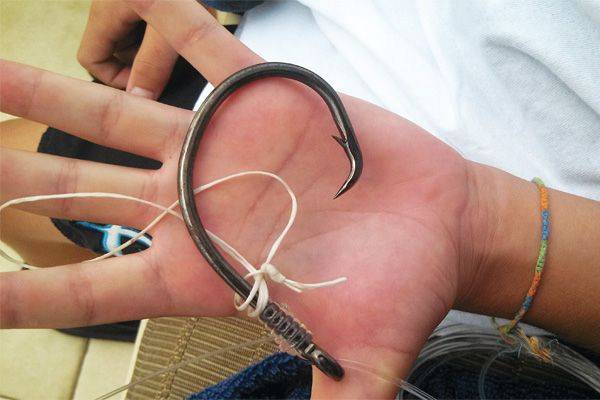by Capt. Bouncer Smith
[dropcap]E[/dropcap]arly man used small bones and sticks to catch fish. He tied a string of some sort in the middle of the bone and when a fish swallowed the bone and bait, the bone would catch in the fish’s throat as the early angler pulled on his string. Before long he realized that V-shaped bones worked better, provided he tied his string to the top of one side. An early man who found a broken spiral seashell probably discovered the circle hook. OK, enough history. We need to use the best hooks for today.
If you know me, you know I am a strong advocate of circle hooks. I first heard that some guides in the Florida Keys were using circle hooks for tarpon in the early 1980s. I tried them with my favorite tarpon client, and they were too good. The client was a very good angler already, and when the circle hook caught in the tarpon’s lip, he would virtually never lose a fish. He said that was not much fun. Back to using J hooks.
Today we use almost only circle hooks. We have tried many brands and styles. The best have been Eagle Claw 2004 EL, Daiichi D84 and VMC light wire circle hooks. All these were strong enough for tackle up to 30-pound test, non-off set and true circle hooks. Mustad had a great light wire circle hook, but the wire was so light that the hooks straightened too easy. True circle hooks, as identfii ed by the best of the fishing community, have the point of the hook perpendicular to the shank or even turned down a little into the circle and the point shank is angled back toward the main shank at least 25 degrees. The point shank is the part of the hook between the normal location of the barb and the bottom bend of the hook. The circle hook should be nonoffset. That means that if you lay the hook on a flat surface, the hook should lay flat from below the eye to the point.
When selecting circle hooks, the size you use must be based on the thickness of the target species’ jaw. The gap between the hook shank and point must allow the jaw of the fish to fit between them. This means that if you are targeting large tarpon, you need a larger hook than for one-pound snappers. That is the one drawback of circle hooks. The hook size must match the fish that bites. This means you have to go with a larger hook to catch a larger fish. We use 6/0 VMC circle hooks for sail fish all the time. The catch rate is great, but if white marlin are showing up in the fleet we up the sizes to a 7/0 VMC circle hook so we can catch these possibly larger fish with larger jaws. If blue marlin were in the area we would go even larger. The good news is that the sail fish don’t seem to mind those larger hook sizes. Like any fishing, a 2/0 circle hook will work great for catching yellowtail snappers, but you better go a lot bigger if using the yellowtail for bait.
Where do we use those old J hooks? We use J hooks for all of our trolling lures. The distance from the shank of the hook straight across to the point should be greater than the width of the head of your trolling lure. The point of your hook is required to be within the skirt of your lure for IGFA angling rules, but the bend of your hook should extend beyond the skirt so that tangles are avoided and you get the best hookup rate to strikes. The easiest way to move your hook to the back of the skirt is to add beads to your leader between the lure and the hook before securing the hook.
Another place we still use J hooks is in double hooked bait, not in bill fish tournaments. In this case we use a circle hook in the nose of the bait where if a billfi sh does strike, it will take the circle hook inside the mouth and get hooked on the circle hook, but if a striking fish like a king fish tries to bite the tail o ff he will be hooked on the J hook back near the tail. We fished a tournament earlier this year that required all live bait be rigged with circle hooks, but kingfi sh and wahoo were major target species. We fished circle hooks in the nose of the baits and circle hook trailers. We took second place with a 40-pound wahoo and our limit of kingfish caught on those circle hook trailers.
Please learn to use circle hooks wherever possible. The survival rate for white marlin released on circle hooks is better than 96 percent and with J hooks less than 73 percent. For sail fish the numbers are the same. This has been the survival rate average for numerous bottom fish and game fish around the globe where circle hook/J hook tagging test have been tried. Please join us in working to have more fish for the future by using circle hooks. Good fishing and great dining.
Capt. Bouncer Smith operates Bouncer’s 33.
Contact him at www.CaptBouncer.com (305) 439-2475

